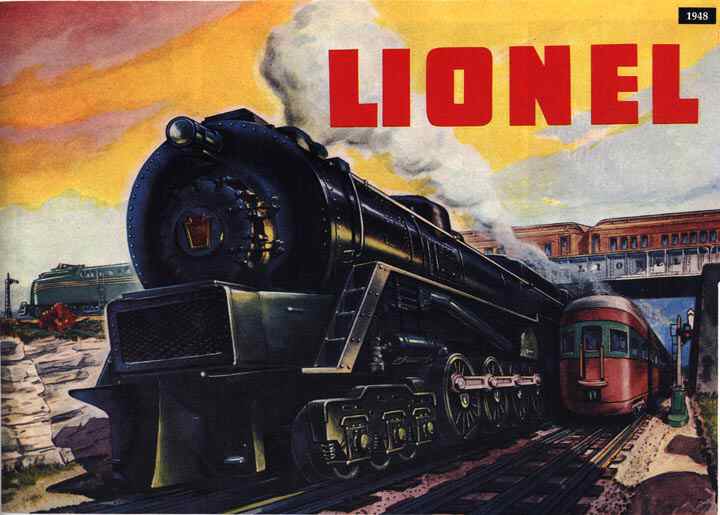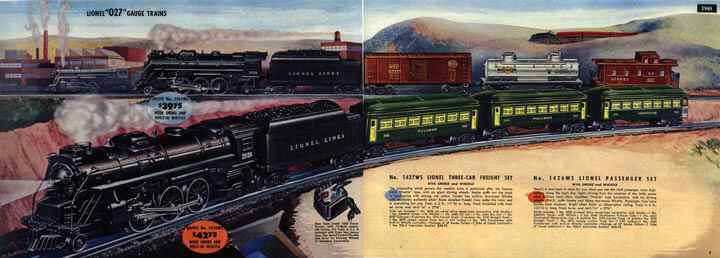My Favorite Catalog
By Peter Atonna
Which are your favorite catalogs? After an article in the recent CTT, that theme has been lively in recent days on the TTML. Let me go out on a limb and say which is not only my favorite, but perhaps the best catalog of all.
It is the 1948 catalog!
The year 1948 was still a Postwar transition year introducing new items and had nowhere near the wonderful selections found in the 1950’s. And, yes it was the catalog of the year I got my first Lionel set, too. But that is not why I feel it is the greatest – really. So why do I think it was the best of all?
Here is why. Take a realistic look back at the trains of our youth – locos and cars racing impossibly fast around bowtie tight curves on a most improbable looking track placed on wood or carpeted floors of bedrooms or basements, scattered with blocks, cardboard buildings and the assorted junk of our youth. But in our minds, this was the world in miniature and we were controlling it, just as Lionel had dictated.
Why could this be so? Simply because our minds were able to create a world for our trains to operate in because of the visions laid out in the catalogs as much as because of our youthful imaginations. It was the Lionel wish books that gave shape to our imaginations.
A change in the format for illustrations from Prewar catalogs to Postwar began in the 1940’s. In 1947, a hesitant introduction of train sets placed in real world settings was made with the illustration for the GG-1 set being introduced that year. Previously almost all illustrations, when there was any background at all, placed the train or accessory in a layout setting.
You were to imagine how the train would look operating on a finely detailed layout. Or you were to admire just the detail of the locos and cars themselves.
That was nice if you knew what a finely detailed layout might look like, but when trains were placed in real world backgrounds, our imaginations soared.
This was something we could relate to. Now we could really see our Lionels connecting towns to cities, serving huge industries, speeding passengers to the next terminal.
All created in our minds by the way of illustrations in the wish book. And all had well recognizable, detailed representations of Lionel trains, the ones we ran on our bedroom floor.
After introducing the concept in 1947, by 1948 Lionel boldly moved forward with double page real world illustrations, even for low priced sets, see pages 6-7. Note cleverly here in the background, other trains are still Lionel’s, the Berkshire and GG-1.
Not all sets got the treatment yet, but again a two page spread on pages 10-11.
Then there was the one that had me dreaming for months, the #2140WS “DeLux Passenger Set” on pages 14-15. Oh did I want that set. And no, it is not the one I got, parents got me a less expensive 027 freight set that “would do more things”.
The second illustration innovation – locomotives drawn larger than life.
Look at the GG-1 sets on pages 18-19 and then the F-3s on the next pages.
You could hold these babes in your hands! And the kid was ready to do so! (Even though the Santa Fe and NYC diesels showed locomotives that somebody built, just not Lionel) In fact, the GG-1¹s on pages 18-19 may be the greatest set illustrations Lionel ever did, even if I still wonder what cars on the freight set were hidden between the gondola and caboose.
Later entire catalogs would become a fantasy of trains in real world scenes. Even accessories and separate sale cars or locos were shown that way. The Lionel catalog became an art book of miniature trains populating the real world and Robert Sherman would lead the way with his great illustrations.
But it was with the 1948 catalog in which Lionel perfected the techniques and set the standard.











